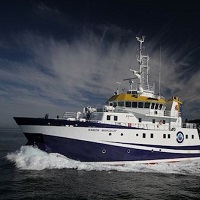Keyword
Acoustic backscatter in the water column
144 record(s)
Type of resources
Categories
Topics
INSPIRE themes
Keywords
Contact for the resource
Provided by
Years
Formats
Status
-

Main objectives: assesment and maping of spawing biomass of blue whiting by ecointegration, characterization of the hidrologic conditions of the surveyed area.
-

Swath bathymetry and seismic studies using the following echosounders: EM710, TOPAS, EK60, EA600 and seismic Sparker. Also gravity cores and box core were used.
-

Main targets of PECAN 1602 are: - Setting-up of R/V Ángeles Alvariño as acoustic-fisheries prospecting vessel. - Optimizing sampling design for the systematic study and abundance estimating of Canary Islands pelagic species. - Using echo integration as a method to estimate Canary Islands pelagic species abundance.
-

Stoca-F is a specific part of the STOCA project to do maintenance to the "ESPEE" mooring of Espartel (Gibraltar), verifing it´s sensors with the readings of a CTD and replacing batteries.
-

Main targets of PECAN 1602 are: - Setting-up of R/V Ángeles Alvariño as acoustic-fisheries prospecting vessel. - Optimizing sampling design for the systematic study and abundance estimating of Canary Islands pelagic species. - Using echo integration as a method to estimate Canary Islands pelagic species abundance.
-

Main targets of PECAN are: - Setting-up of R/V Ángeles Alvariño as acoustic-fisheries prospecting vessel. - Optimizing sampling design for the systematic study and abundance estimating of Canary Islands pelagic species. - Using echo integration as a method to estimate Canary Islands pelagic species abundance.
-

Main targets of PECAN are: - Setting-up of R/V Ángeles Alvariño as acoustic-fisheries prospecting vessel. - Optimizing sampling design for the systematic study and abundance estimating of Canary Islands pelagic species. - Using echo integration as a method to estimate Canary Islands pelagic species abundance.
-

Investigate the deep crustal structure of the Alboran sea
-
Investigate the deep crustal structure of the Alboran sea
-

Seamount evolution related to tectonics and influence on recent sedimentary systems
 Catálogo de datos del IEO
Catálogo de datos del IEO